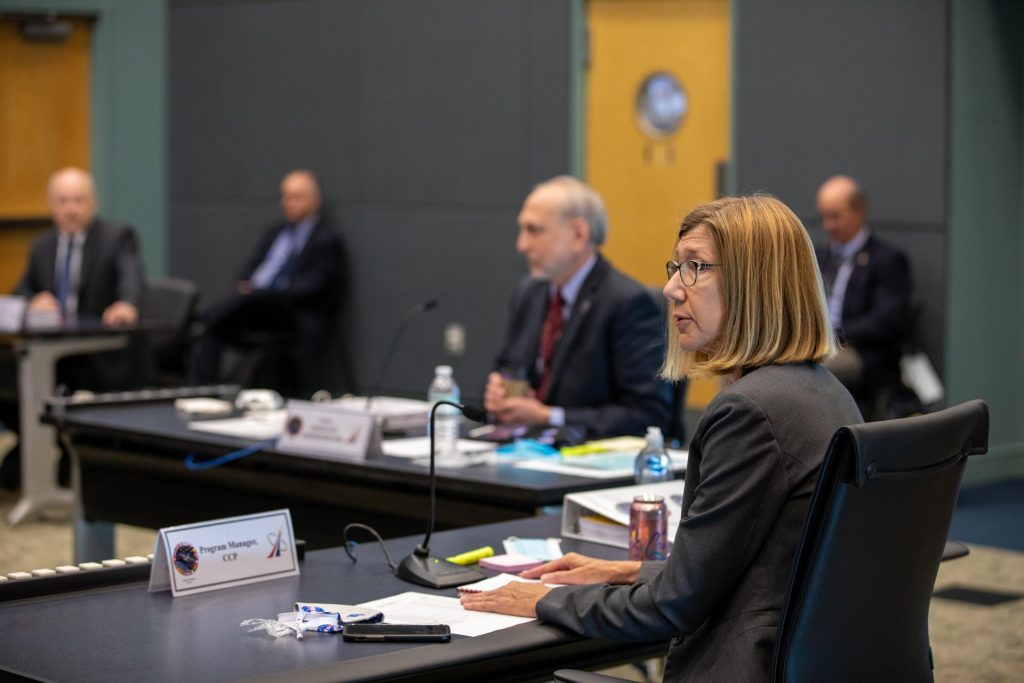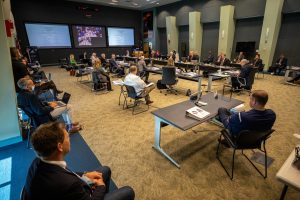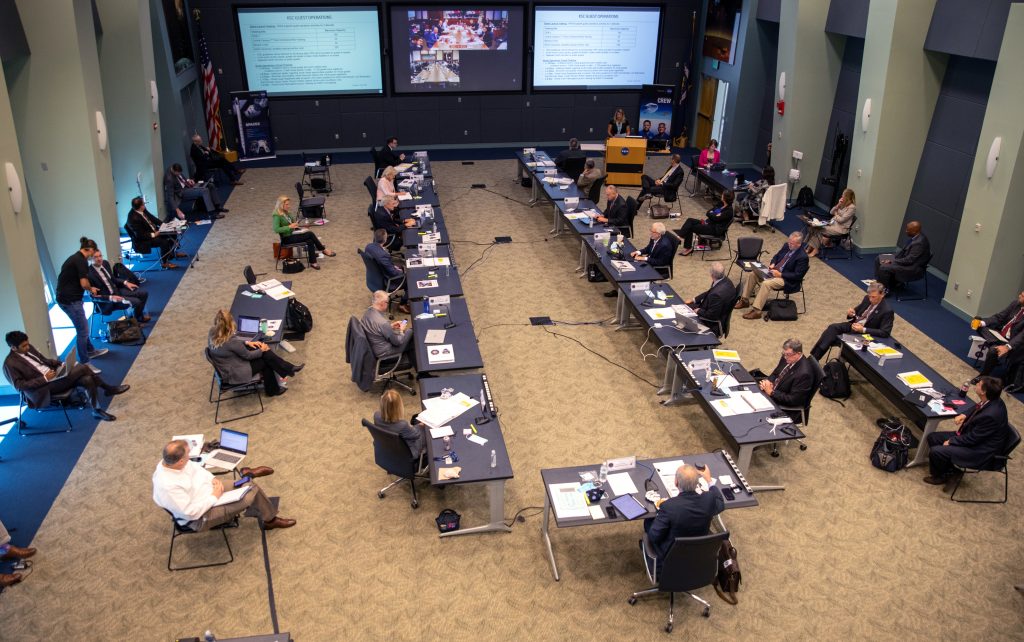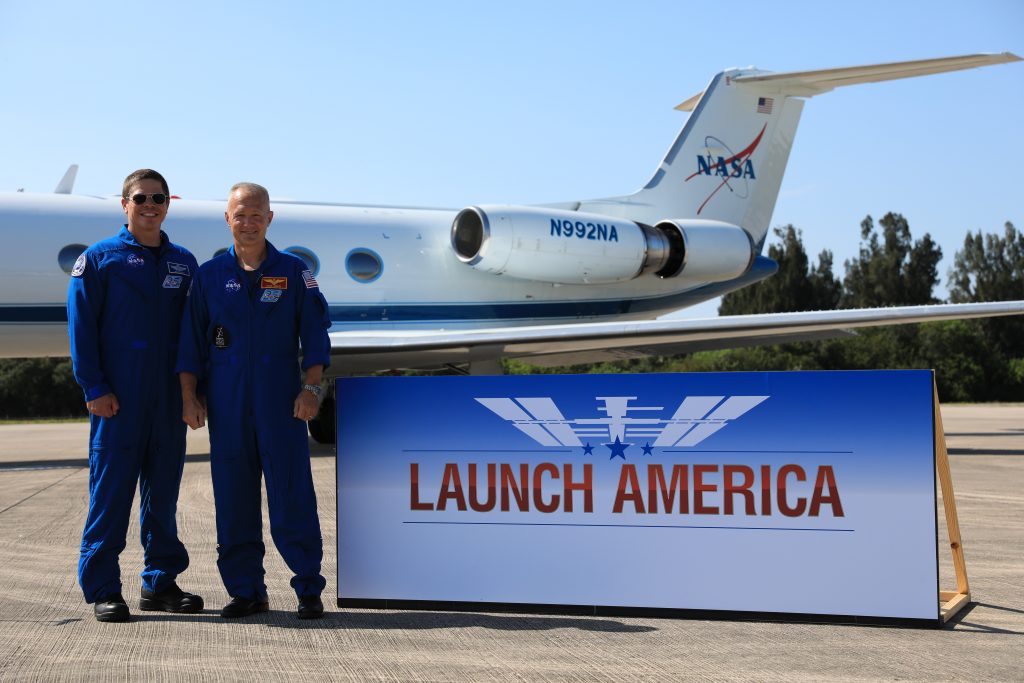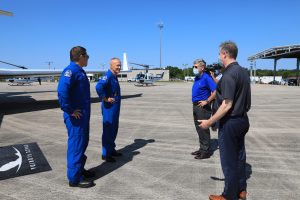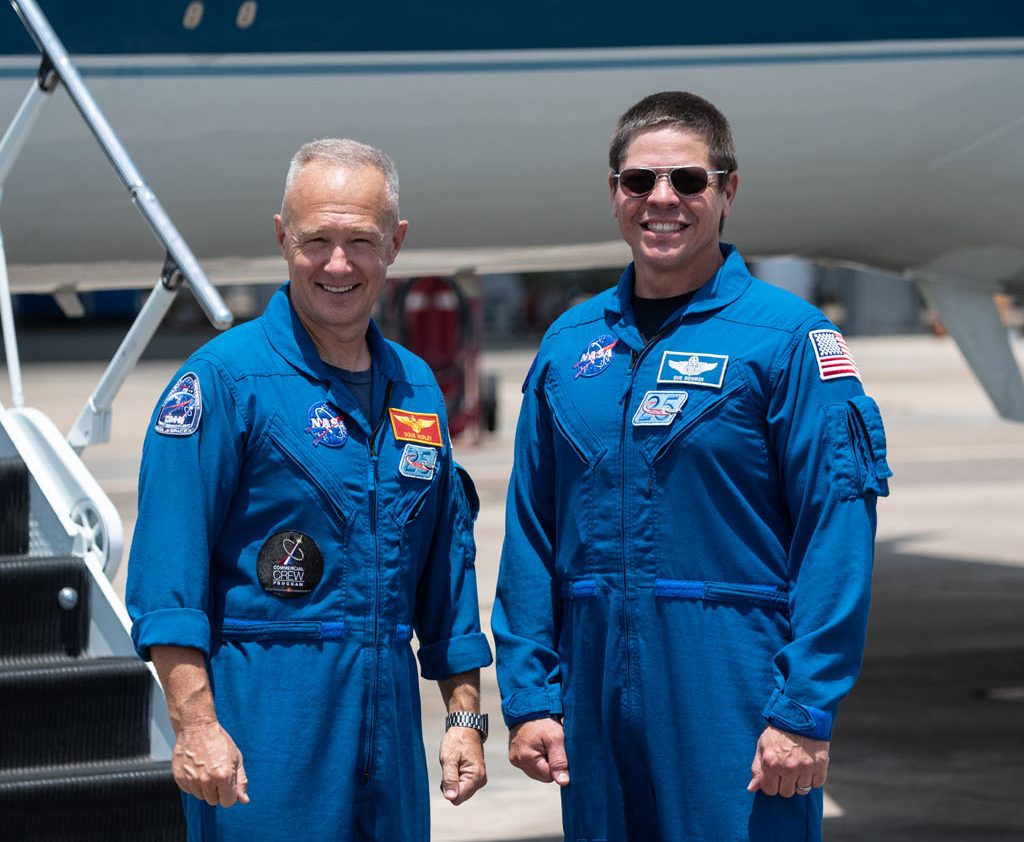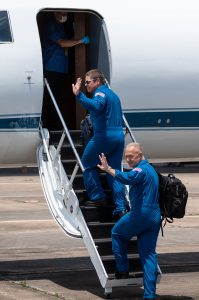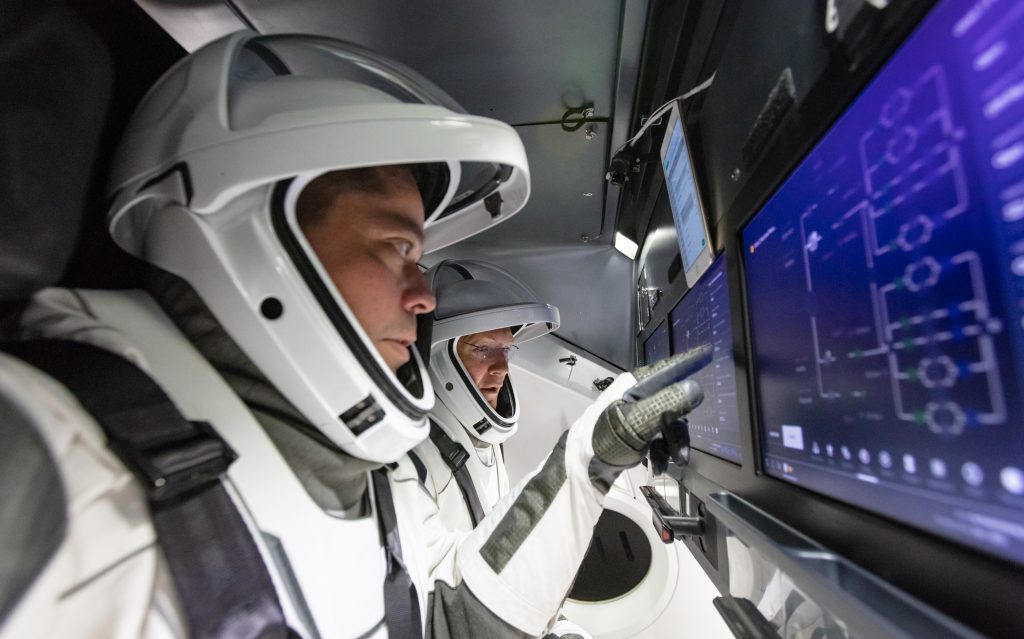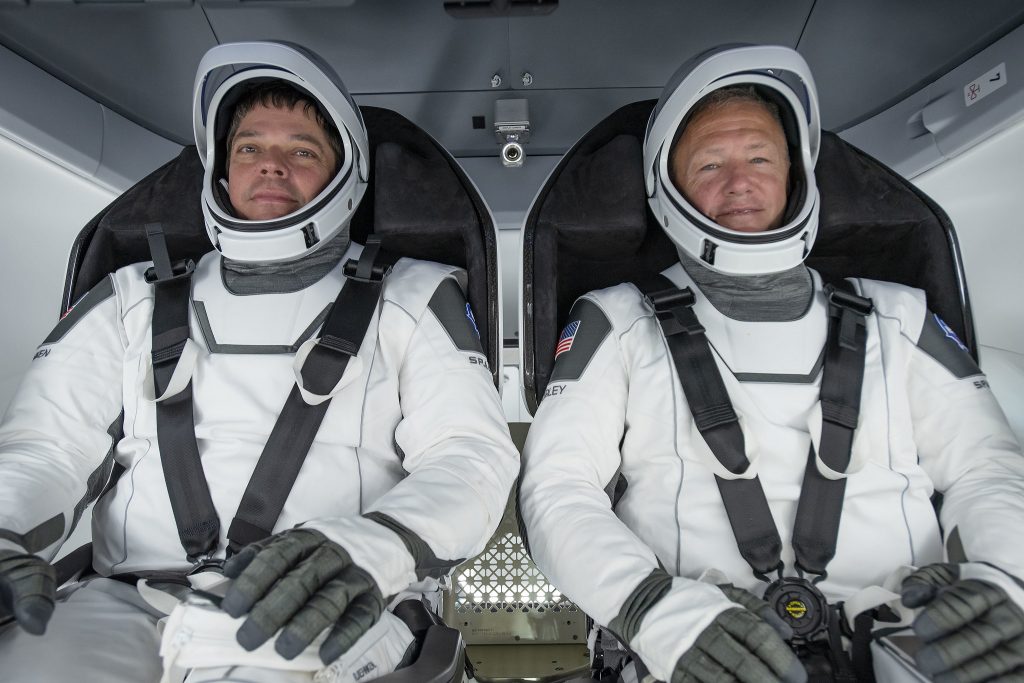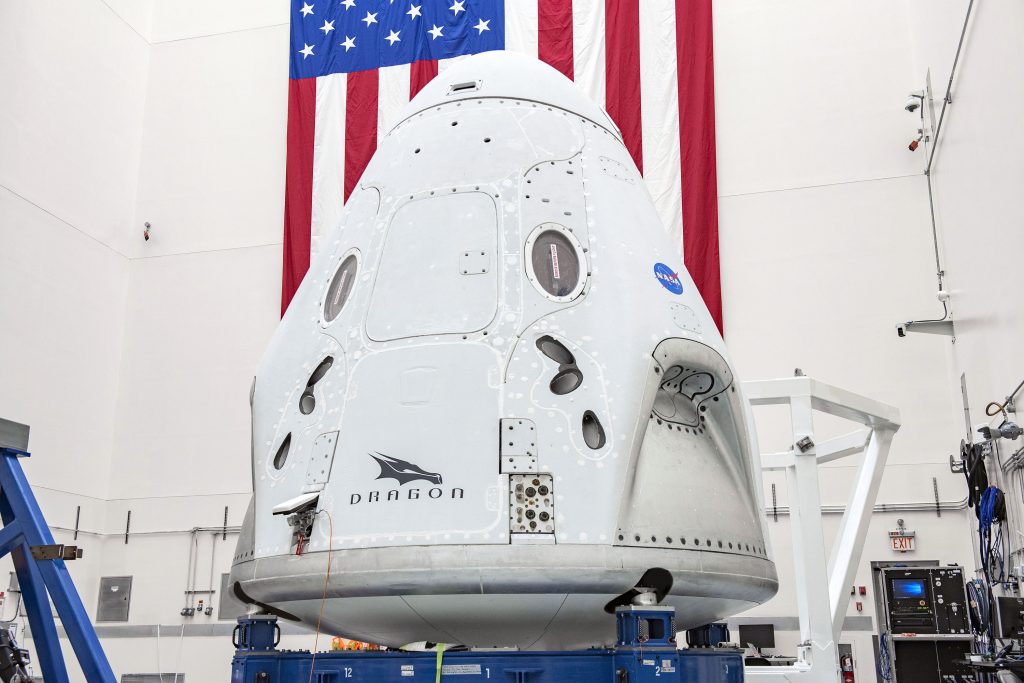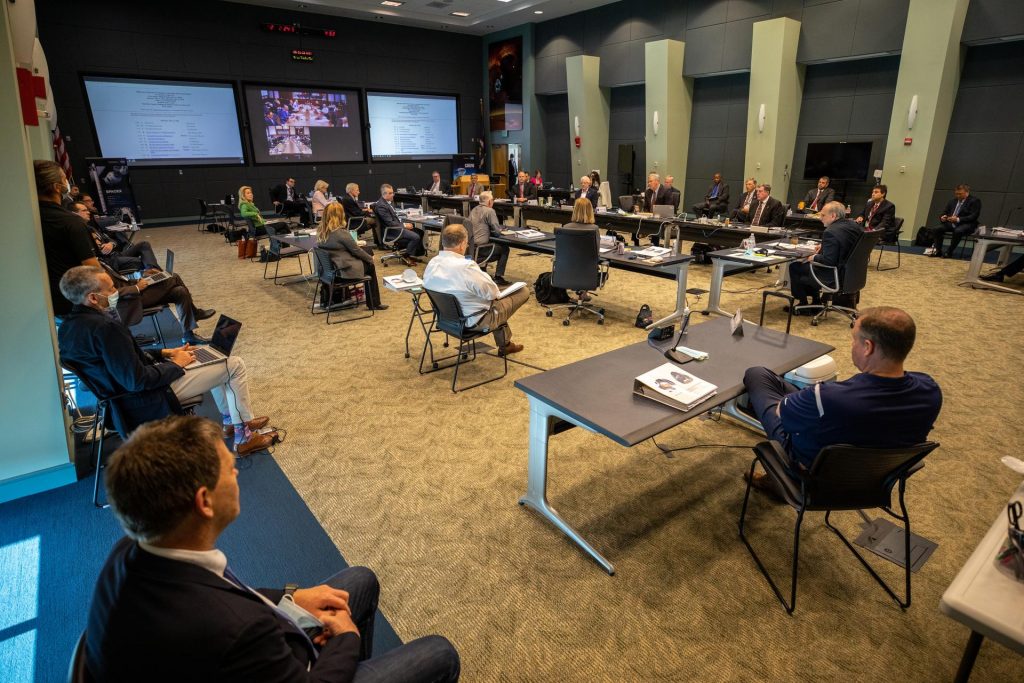
NASA and SpaceX managers are gathered for a second day at the agency’s Kennedy Space Center in Florida, with some participating remotely to maintain physical distance, for the Demo-2 Flight Readiness Review (FRR). The teams are expected to complete the review today. NASA and SpaceX also will hold a news conference on NASA Television approximately one hour after the review. More information about the timing of the briefing will be updated here and on social media as the review nears conclusion.
The participants for the media conference are:
- NASA Administrator Jim Bridenstine
- NASA Associate Administrator Steve Jurczyk
- Kathy Lueders, manager, NASA Commercial Crew Program
- Kirk Shireman, manager, International Space Station Program
- Benji Reed, director of crew mission management, SpaceX
- Norm Knight, deputy director, NASA Johnson Space Center Flight Operations
NASA astronauts Robert Behnken and Douglas Hurley also will participate in a virtual media engagement at 2:15 p.m. today from Astronaut Crew Quarters at Kennedy, answering questions about their upcoming launch.
SpaceX will launch a Falcon 9 rocket carrying NASA astronauts Behnken and Hurley aboard the company’s Crew Dragon spacecraft to the International Space Station. Liftoff is planned for 4:33 p.m. EDT on Wednesday, May 27, from Launch Complex 39A at Kennedy. Part of NASA’s Commercial Crew Program, the flight will return human spaceflight to the International Space Station from America for the first time since the retirement of the Space Shuttle Program in 2011.
Demo-2 will be SpaceX’s final test flight to validate its crew transportation system, including the Crew Dragon, Falcon 9, launch pad and operations capabilities. During the mission, the crew and SpaceX mission controllers will verify the performance of the spacecraft’s environmental control system, displays and control system, maneuvering thrusters, autonomous docking capability, and more. Behnken and Hurley will join the Expedition 63 crew on the station to conduct important research as well as support station operations and maintenance. While docked to the station, the crew will run tests to ensure the Crew Dragon spacecraft is capable on future missions of remaining connected to the station for up to 210 days. The specific duration for this mission will be determined after arrival based on the readiness of the next commercial crew launch. Finally, the mission will conclude with the Crew Dragon undocking from the station, deorbiting and returning Behnken and Hurley to Earth with a safe splashdown in the Atlantic Ocean.

